Movies were already facing a distribution crisis before the pandemic. With only a handful of deep-pocketed buyers dominating the festival markets, and many buyers wary of anything save for safe commercial bets, it has become increasingly difficult for daring international cinema to break through the North American market. At the same time, the pandemic has forced a lot of distributors to rethink their role in film culture, as they’ve worked within the constraints of home viewership to reach eager audiences beyond those with easy access to the arthouse.
Early innovation by companies such as Kino Lorber and Oscilloscope helped pioneer the notion of the “virtual cinema” release that brought recent acquisitions to national audiences while creating a modest pipeline for theaters. Companies like IFC and Magnolia, well-entrenched in the VOD space for over a decade, churned along. NEON and Bleecker Street embraced their Hulu output deals while others, from ARRAY to Grasshopper and MUBI, engaged audiences across the digital landscape however they could.
While film festivals were largely virtual affairs, programmers did their part to showcase some of the best new movies that deserved wider audiences. Nevertheless, many of the highlights from this year’s circuit still need homes. The opportunities of 2021 remain a big mystery, but buyers will certainly need something to show the world, and anyone still looking to fill their slate should start by considering these 10 highlights.
David Ehrlich, Ryan Lattanzio, and Jude Dry also contributed to this article.
“The Disciple”
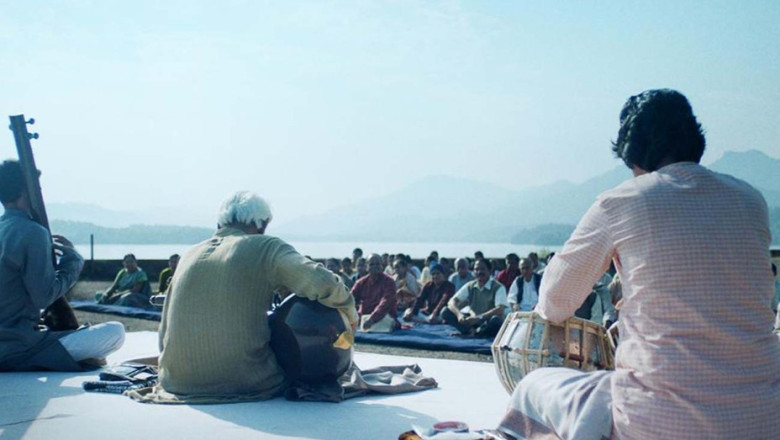
“The Disciple”
Northern Indian classical music sounds like nothing other than itself: The jangling of the sitar and the meditational warbling of the improvised vocals known as raga have a profound ancient quality that taps into the mystery of human existence. Ravi Shankar may be the name most closely associated with popularizing such melodies in the West, but the art form (known as Hindustani music) extends well beyond the accomplishments of one man. That’s the hard truth faced by Sharad (real-life musician and acting newcomer Aditya Modak) in Chaitanya Tamhane’s brilliant sophomore drama “The Disciple,” the story of an idealistic young performer who dreams of capturing the magic of a musical traditional that he may lack the talent to achieve himself. In Tamhane’s dreamy, transcendent character study, the undulating raga melodies serve as a transformative portal to self-discovery that places the audiences in the confines of its entrancing power.
“The Disciple” follows Tamhane’s stellar first feature, “Court,” which also looked at the complex role of music in Indian society, in that case through the lens of a corrupt judicial system. Here, the music that Sharad adores take on a more personal connotation, as the man contends with the provincial nature of his vocation in a world that waits for no one. Taking cues from his wizened mentor (veteran singer Arun Dravid), Sharad dreams of obtaining high marks as a classical music vocalist, absorbing enthusiasm for the process from his late father. But there’s a reason only an elite few manage to excel at the rhythmic, transcendental wailings of the raga, and it doesn’t take long to see that Sharad might not have the right stuff. “The Disciple” unfolds in slow, melancholic rhythms on par with the music at its center. Set against Mumbai’s bustling cityscape, a backdrop at violent odds with Sharad’s contemplative vocation, the movie follows the character through three distinct eras as he grows older and continues to internalize his frustration. The movie is more about the journey than the destination, with a conclusion that suggests the student never really becomes the teacher when the subject is his own life. Cinema is rarely this relaxing and revelatory all at once. —EK
Sales Contact: Endeavor
“In Between Dying”
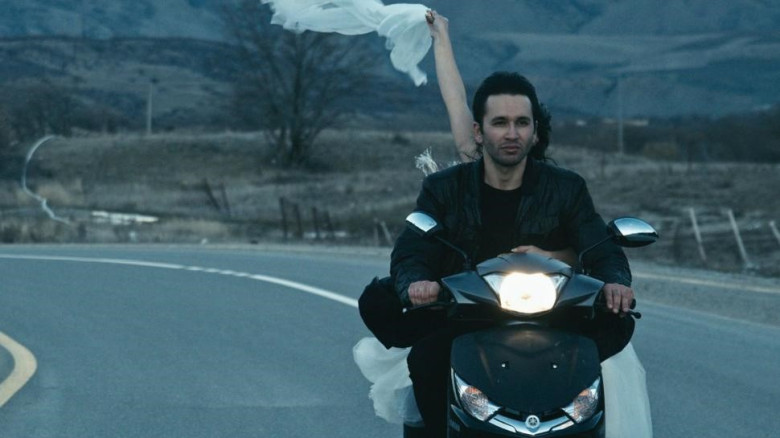
“In Between Dying”
“Enigmatic” doesn’t begin to describe Hilal Baydarov’s “In Between Dying,” a koan-like story that follows a day in the life — or the life in a day — of a young man searching the empty Azerbaijan countryside for love (specifically that of his wife and child, whose faces he’s never seen), and bringing death with him wherever he goes. Or is he searching the winding roads and shallow valleys of his homeland for death, and bringing love to all of the strangers he encounters along the way? Such broadly philosophical questions saturate the still and expectant atmosphere of Baydarov’s seventh film in the last two years.
But for all of its elusiveness, “In Between Dying” is a film that wants to be found. It’s opaque, to be sure — it opens with a poem written by a six-year-old about a teacher looking for a lost class of students in a hallway with 1,000 doors, and Baydarov never so much as knocks on any of them — but not in a way that feels impenetrable or forbidding. Prologue aside, this mesmeric trip is more accessible than any of the Andrei Tarkovsky masterpieces that inspired Baydarov’s transcendental vision, and a hell of a lot shorter than the Nuri Bilge Ceylan movies evoked by the slow path it wends through its gray landscapes. There may not be a lot of money here, but “In Between Dying” will catch on fast if it finds an audience that can vibe with its wavelength. At a time when Eastern European cinema is perilously underrepresented on this side of the world, a boutique distributor would be smart to put its name on such a memorable and beguiling import, especially if Baydarov continues along his current trajectory to become a major — and prolific — force on the world stage over the next few years. —DE
Sales Contact: Pluto Films
“Limbo”
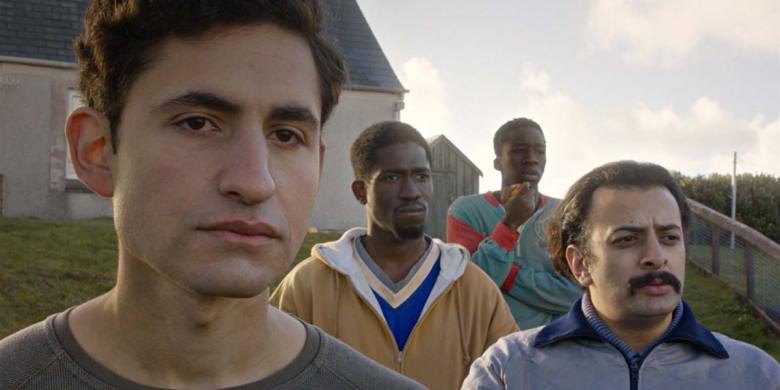
“Limbo”
In recent years, the plights of migrants have yielded many grim cinematic portraits, from “Mediterranea” to “Fire at Sea.” Given that track record, writer/director Ben Sharrock’s “Limbo” provides a welcome alternative. In this quirky, deadpan portrait of a Syrian refugee trapped in an asylum center in the remote Scottish island chain of the Outer Hebrides, the backdrop often provides the punchline to an ironic joke. Omar (Amir El-Masry), a young Syrian refugee intent on pursuing his musician dreams, gazes out at the vast, empty landscapes with a constant befuddled look that always says: That’s it?
Yet “Limbo” doesn’t have fun at Omar’s expense. Sharrock’s charming and insightful second feature justifies its title by using the droll backdrop to explore how the young man comes to terms with his nomadic status. Guided by El-Masry’s tender, understated performance and a tone that hovers between playful and sincere, “Limbo” manages to turn its downbeat scenario into a sweet and touching rumination on the quest to belong in an empty world. That’s a lesson we could all use right now. —EK
Sales Contact: Protagonist Pictures
“Nadia, Butterfly”

“Nadia, Butterfly”
Set at the Tokyo 2020 Olympics, starring actual Olympic medalist Katerine Savard as a 21-year-old athlete on the brink of retirement, and convincingly selling the illusion that the Games really happened, Pascal Plante’s sensitive and tactile “Nadia, Butterfly” feels like the ultra-sporty sister that “Lost in Translation” never had. This intimate, unhurried story of a swimmer at the first major crossroads (or pool turn) of her life may not share the wry comic touch or May/December undercurrent of Sofia Coppola’s Japan-set romance, but it paints a similarly woozy portrait of self-discovery around a young woman who finds herself on the other side of the world. There’s even a karaoke sequence in the middle, a bittersweet drive back to Narita Airport at the end, and a bunch of Beach House cues on the soundtrack (a band that basically emerged from the morning-after haze left behind by Coppola’s film). There may never have been a sports movie suffused with such a thick cloud of ennui. Excellent performances, a vivid sense of place, and a soft-focus approach to its characters help “Nadia, Butterfly” spread its wings into a rare and memorable portrait of becoming. With the rescheduled Tokyo Games only a few months away, a speciality distributor would be smart to buy the film and have it ready to go for the summer. —DE
“No Ordinary Man”

Marquise Vilson in “No Ordinary Man”
TIFF
Thanks to a growing concern with positive transgender representation, the trans cinema canon — meaning one driven by trans filmmakers — is slowly and steadily growing. Onscreen and behind the camera, trans women have been leading the charge while trans male representation lags behind. In Chase Joynt and Aisling Chin-Yee’s inventive riff on the biographical documentary, the life of trans jazz musician Billy Tipton is transformed into an exploration of trans-masculine identity. In addition to informative talking head interviews with trans scholars, such as Susan Stryker and C. Riley Norton, the film uses audition footage of trans actors vying for the role of Billy Tipton. “Ben Is Back” actor Marquise Vilson emerges as the indisputable star of the film; both for his sensitive analysis of Billy’s emotional life and stellar performance in the fictional narrative film. Like “Disclosure” did earlier this year, “No Ordinary Man” excavates an important chapter of trans history while writing the next chapter; audiences will be eager to see it. —JD
Sales Contact: Radiant Films
“The Wanting Mare”
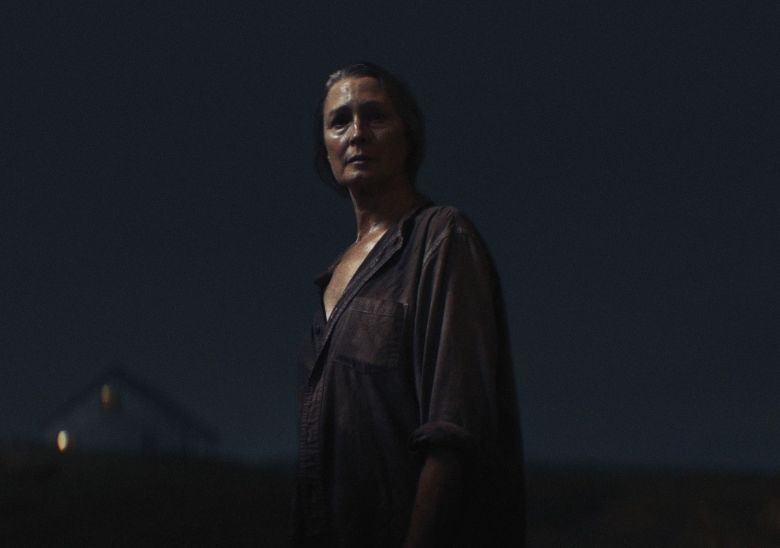
“The Wanting Mare”
Nicholas Ashe Bateman
Director Nicholas Ashe’s haunting sci-fi debut imagines the fantastical world of Anmaere, where horses run wild and are a treasured resource. In the eerie, noir-like city of Whithren, this backdrop provides for a beguiling family drama that spans generations. With time, Ashe’s movie blossoms into a kind of minimalist post-apocalyptic sequel to “Game of Thrones,” envisioning a universe where magic once dominated society but has since seeped out of the frame — leaving only an isolated society where the social order has broken down and stragglers battle to survive each day. It’s here that Ashe first follows the plight of Moira (Christine Kellogg-Darrin) survives on the outskirts of Whithren, where a serendipitous encounter with a wounded man leads her to a transformative experience as she fights for a ticket out of town. Years later, the movie shifts to the experience of Moira’s adopted child, who battles through an underground crime syndicate to achieve the escape her mother always dreamed about. Ashe works wonders with tone and hints of a vast, shadowy landscape hovering just on the brink of each intimate frame, resulting in one of the year’s most intriguing debuts — one that points to a larger mythology and more movies that might come out of it. Someone should invest in this DIY franchise. —EK
Sales Contact: info@anmaere.com
“The Meaning of Hitler”

“The Meaning of Hitler”
Time has a tendency to flatten history’s darkest chapters, reducing panic and persecution to footnotes and caricature. So it goes with Adolf Hitler, whose outsized image as a cartoon villain often obscures the horrifying endurance of Nazi ideology today. “The Meaning of Hitler” sets the record straight. A bracing blend of historical inquiry and cinematic soul-searching, directors Petra Epperlein and Michael Tucker’s eerie and insightful essay film burrows into the nexus of Hitler’s mythology in a remarkable attempt to determine whether it makes more sense to understand its resilience or tune it out. As it meanders through a parade of talking heads, pensive narration, fragments of biography, and genocidal sightseeing, the movie assembles a trenchant argument against shrugging aside the specter of Nazism, and makes it clear that the fascism of the past can happen just as easily today. Even in the aftermath of the 2020 election, that warning deserves to be heard, and this movie makes a compelling cinematic ride out of it. —EK
Sales Contact: Cinetic
“Topside”
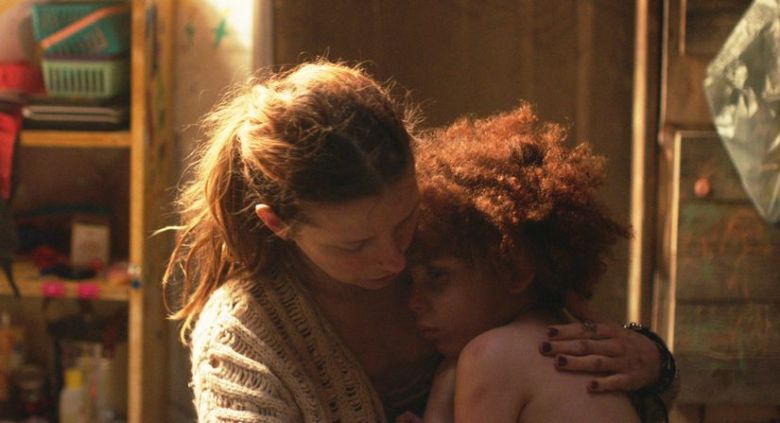
“Topside”
Beneath the New York City subway system lies a shadowy labyrinth teeming with people living on the margins of society. It’s a natural cinematic backdrop, and the 2000 documentary “Dark Days” probed it so well it has served as the last word on the subject for the past 20 years. (Before that, Jennifer Toth’s 1997 book “The Mole People: Life in the Tunnels Beneath New York City” laid out the ecosystem.) However, the riveting drama “Topside” finds a unique way in. The directorial debut from co-directors Logan George and Celine Held (who also stars) enacts a tense mother-daughter survivor story around the prospects of raising a child in that darkness, only to find that the world above contains much scarier prospects. Despite its rough-hewed aesthetic and a jittery, moment-to-moment pace, “Topside” adopts a familiar subgenre of kid-in-peril movies, from “Little Fugitive” to “The Florida Project.” Much of the drama takes place from the innocent perspective of five year-old Little (Zhaila Farmer), who roams her subterranean surroundings with unfettered curiosity — that is, until she and her mother are forced to escape to the world above. It’s a remarkable transition that unfolds with brisk camerawork and busy sound design that, for the traumatized Little, may as well be a sci-fi nightmare. “Topside” trusts the nature of Little’s bond with her mother to compel this unnerving nighttime odyssey forward, until it arrives at a point where Little’s shock at the world around her becomes our own. Farmer is one of the great child discoveries since “Beasts of the Southern Wild,” and the movie will thrill audiences who prefer their family dramas with excitement baked into every moment. —EK
Sales Contact: Endeavor
“Preparations to Be Together For an Unknown Period of Time”
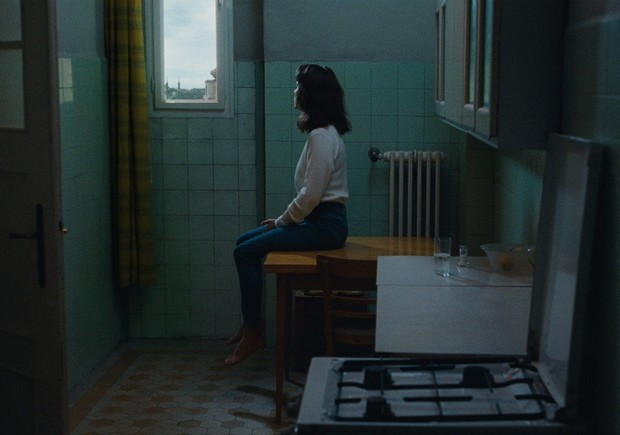
“Preparations To Be Together For An Unknown Period of Time”
Courtesy TIFF
One of the early films to bow at TIFF, Lili Horvát’s “Preparations to Be Together for an Unknown Period of Time” has only grown in this writer’s estimation since publishing IndieWire’s review. Had Jesse and Celine actually met six months after the events of “Before Sunrise” as planned, had they gone horribly wrong to the point where one of the parties couldn’t even remember the other, and had they both been neurosurgeons, it might look something like this cool-headed Hungarian oddity. With the gloomy echoes of Krzysztof Kieślowski, Horvát follows a neurosurgeon named Márta around Budapest — not unlike how Hitchcock chased Kim Novak in “Vertigo” — who’s convinced a perfect stranger is a man she met abroad and had plans to meet up with back in her home city. The mouthful of a title belies the filmmaker’s stark approach to complex material in this haunting cinematic puzzle. —RL
Sales Agent: National Film Institute World Sales
“Quo Vadis, Aida?”
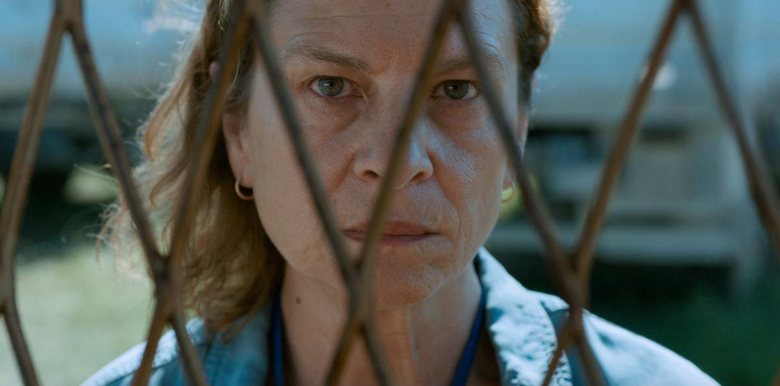
“Quo Vadis, Aida?”
TIFF
In her riveting fifth feature, Bosnian filmmaker Jasmila Žbanić renders with horrifying humanity a day in the life of a United Nations translator working throughout the Srebrenica massacre. By anchoring the film around one woman, a mother and wife trying desperately to secure safety for her husband and sons, Žbanić weaves a nightmarish scenario into an evocative ode to the resilience of the human spirit. As Aida (Jasna Ðuričić) bounces between translating important negotiations, medical interventions, and invasive searches, she darts off to ferry her family to various tenuous hiding spots. A survivor of the war herself, Žbanić brings a graceful urgency to the horrific events the film dramatizes, slowly turning the screws with gut-wrenching precision rather than indulging in exploitative violence. She clearly understands the unimaginable toll living through such trauma can take, and is an expert in the craft of translating it into cinematic terms. —JD
Sales Contact: Indie Sales


